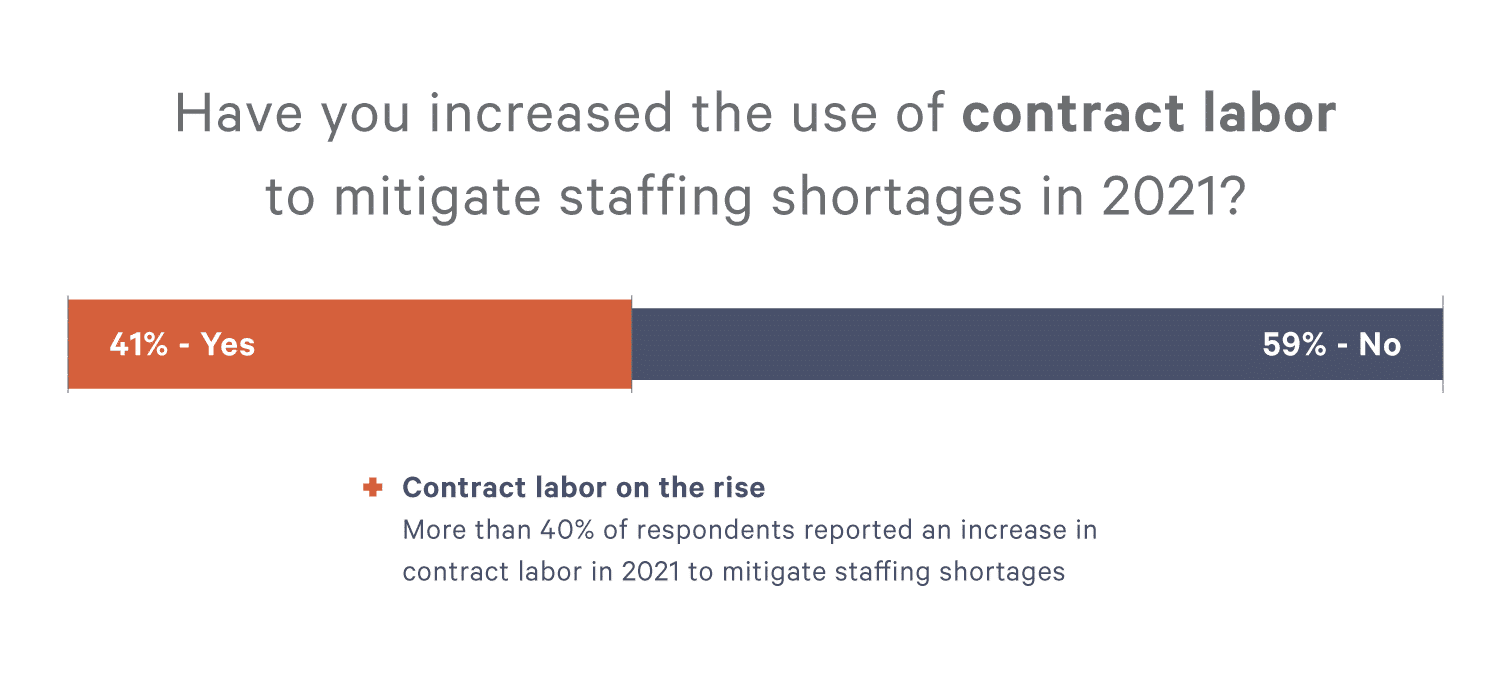Blog
How the right technology can support recruitment and retention during the caregiver shortage

At-home care is one of the fastest-growing healthcare segments in North America, even before the pandemic. US Government stats rank home care as one of the US’s fastest-growing occupations, with an additional million workers needed by 2026 (an increase of 50% from 2014). In recent years, the demand for at-home care has increased drastically, however, employee retention and recruitment has dipped significantly.
A report by Home Health Care News (HHCN) and AlayaCare states that more than 40% of home care providers have turned to contract labor in 2021 to mitigate staffing shortages and three-quarters of respondents reported an increase in the cost of care due to staffing shortages.
At-home healthcare is currently undergoing a “workforce crisis” where employee turnover is at a record high. Care providers have reported that they’re having acute problems recruiting and retaining frontline staff for a variety of reasons, such as:
- Covid vaccine mandates
- Inconsistent schedules
- Lack of proper training, development and/or growth opportunities
- Lacking proper resources and/or technology supporting on-the-job function
- Poor routing and workflow management
Agencies leaning on contract labor to fill shortages


Many home care agencies are beginning to look for new solutions to their staffing problems, including exploring the use of contract workers to support filling vacant visits. A high-turnover rate entails more recruitment costs, generates periods of understaffing, and requires training in the facility’s policies and work procedures. This has a high impact on steady care for the clients. For example, a study, by Antwi et al (2016), found that a 10% increase in turnover was associated with an increase in mortality among nursing home care residents and a decrease in the quality of care.
Technology can be used as an asset to help with the labor shortage
“The labor shortage in the home-care industry continues to be amplified by the pandemic and agencies are resorting to hiring contract labor (at an increased cost) to keep up with the demand. AlayaCare created the AlayaCare Marketplace so agencies could have access to all available care workers in their region and fill gaps they may be facing due to care worker shortage and increasing demand, eliminating the need to hire contract labor. It not only allows an agency access to maximum supply in any location, but also automates a very tedious and manual process.” – Neil Grunberg, SVP of AlayaCare Marketplace and Corporate Development, 2022 HHCN webinar.
Employers should consider technological investments that would streamline tasks caregivers spend unnecessarily high amounts of time on, leaving them with more time to focus on provide their patients with high quality care.
For example, home care day-to-day software (such as AlayaCare cloud-based home care software) can streamline and automate workflows eliminating manual work that usually takes up a handful of hours within a workday. Therefore, leaving more time for the caregiver to focus on their patient.
The survey reported that 18% of respondents claimed that inconsistent schedules were their top reason for employee churn.
“Without them having good schedules that give them enough hours or given them the hours they want, at the time of day and the frequency that they need, they won’t be happy,” Namoi Goldapple, VP of AlayaLabs at the HHCN Webinar.
Reduce employee burnout by increasing training and development opportunities
In addition to improving schedules, home care providers can curb employee burnout by investing in training and education opportunities. The HHCN-AlayaCare survey reported that 36% of respondents managed or prevented staff burnout and churn by increasing training and development opportunities.
“Streamlining the onboarding process is something that can really help the agency. There’s a lot of technology out there that can help with that. The term we use is ‘speed to schedule.’ But the faster you can get a caregiver working, the better that will be with recruitment and retention. There’s a lot of applicant tracking and onboarding solutions that are out there and training as well. We work with agencies to create self-serve orientation training programs to give caregivers the ability to do some of the orientation at their own time and their own schedule.” – Allen Levine, AVP Growth & Revenue Nevvon, HHCN Webinar.
Using technology that partners with training systems, such as AlayaCare’s partnership with Care Academy and Nevvon, onboarding can get new caregivers up to speed sooner by offering a guided experience of what to expect. With virtual training, you can cut training costs, have caregivers trained faster, and open them up for more opportunities to provide specialized care to clients with complex diseases. With virtual training, staff can take classes at their preferred time and pace safely and effectively.
Utilize your data to help employees work smarter
“Use technology well, it should indeed make your employees work smarter, not harder. Make sure supervisors and office managers are well-trained in its use. Office technology can make scheduling easier and more equitable, improve interoffice communications, and allow employees to easily record time and mileage accrued on the job. Make sure employees are reimbursed promptly for work-related expenses. This shows you care about their out-of-pocket expenditures.” – HomeCare Magazine.
Technology that allows you to capture client data for employees to record their shift times and mileage can optimize scheduling and travel between clients to reduce travel time and increase caregiver utilization.
There isn’t one simple solution to overcome the labor shortage in home care, and currently the short-term solution is relying on contract labor to meet the demand. But looking at long-term investments such as training, incentivizing employees and even bringing in technology to support the caregiver an help lead to better outcomes.
—
Technology goes hand in hand with other tactics to solve the labor shortage.
—
AlayaCare software contains a route and schedule optimization tool and mobile app that allows employees to view and update files from anywhere.


